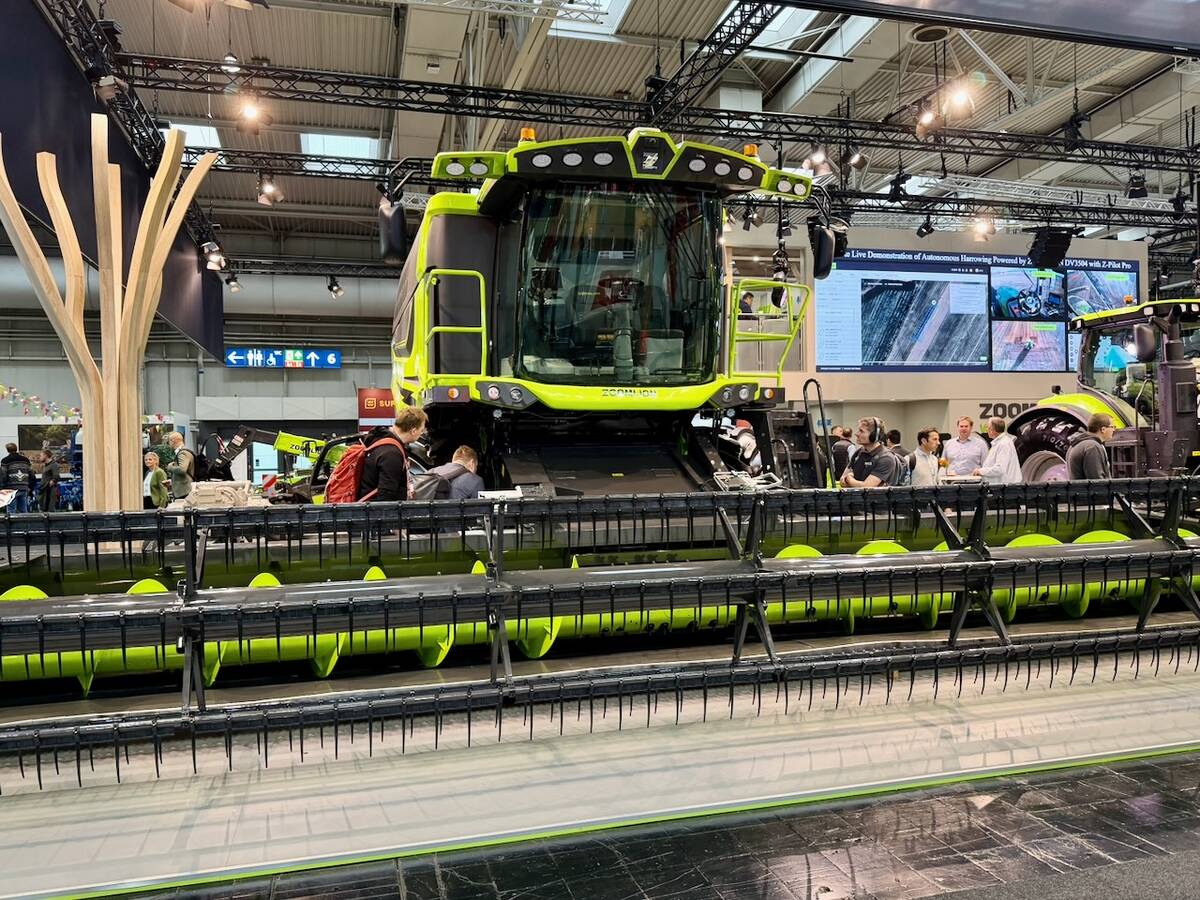RED DEER — Cow comfort and animal welfare are Dan Weary’s specialties.
And so far, he says, the public does not seem worried about the quality of life for dairy cows.
“In general, the public has a pretty positive attitude about the dairy farm for lots of good reasons,” he said in an interview at the recent Western Dairy Seminar in Red Deer.
“We have benefitted as a dairy industry for having a pretty good level of public support.”
Still, there are certain practices that people are opposed to because they are painful and perhaps unnecessary.
Read Also

Agritechnica Day 3: Hybrid drive for a combine, data standards keep up to tech change and tractors of the year
Agritechnica 2025 Day 3: Hybrid drive for a combine, data standards keep up to tech change and tractors of the year.
One of those is tail docking, which occurred on 40 percent of the dairies that participated in a national animal health survey in the United States in 2008.
It is less common in Canada.
“In Canada for the last year and a half, we shouldn’t be doing that because the dairy code of practice prohibits the practice,” Weary said.
“The code is ultimately voluntary and whether a person follows the code is ultimately up to them.”
An informal online survey conducted by the University of British Columbia found widespread opposition to tail docking among veterinarians, producers and the public.
The standard recommendation when shortening the tail is to measure one hand below the vulva. It is usually done to young heifers.
There are many ways to shorten the tail, including surgically docking and shortening using a rubber ring that slowly tightens.
Tails are shortened to improve hygiene, but Weary said there is no evidence that it helps keep manure and urine off the udder or the face of the worker.
“There has been a decade worth of studies on this issue and it turns out tail docking has absolutely no benefit,” he said.
“It is an ineffective Band-Aid.”
The U.S. Department of Agriculture found farms that did it had other hygiene problems and were probably doing so to solve a problem with deeper roots.
Cows use their tails for switching flies and will exhibit other restless behaviours to remove pests, such as twitching.
The pain associated with tail docking is probably less than other procedures.
“The big one for dairy cattle is dehorning,” Weary said.
Dehorning is painful and there is good research on how to do it less invasively, he added.
UBC offers regular online forums dealing with ethical and scientific issues, including animal welfare. They can be found at www.yourviews.ubc.ca.















